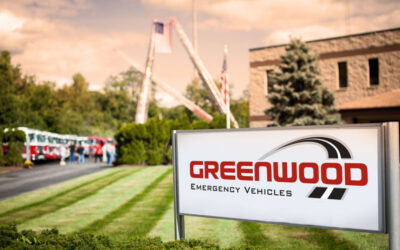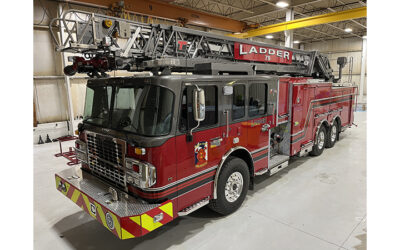Two longtime customers of Sutphen Corp., the Dearborn (MI) Fire Department and Clemson (SC) Fire and EMS, are running only Sutphen engines and aerials in their fire response fleets, and praise the family-owned company for its quality products and strong relationships with its customers.
Joe Murray, Dearborn Fire Department’s chief, says Dearborn has a long history with Sutphen. “We still have a hand pumper from 1908 made by Sutphen in one of our stations,” Murray points out. “I’ve been here 16 years, and when I became chief in 2012, we had a half different manufacturer’s brands in our fleet. We saw that our Sutphen vehicles were a lot more efficient for us in terms of quality and not spending as much in repairs and downtime as with other manufacturers’ rigs. Since then, our entire fleet is Sutphen: engines, quints, and aerials.”
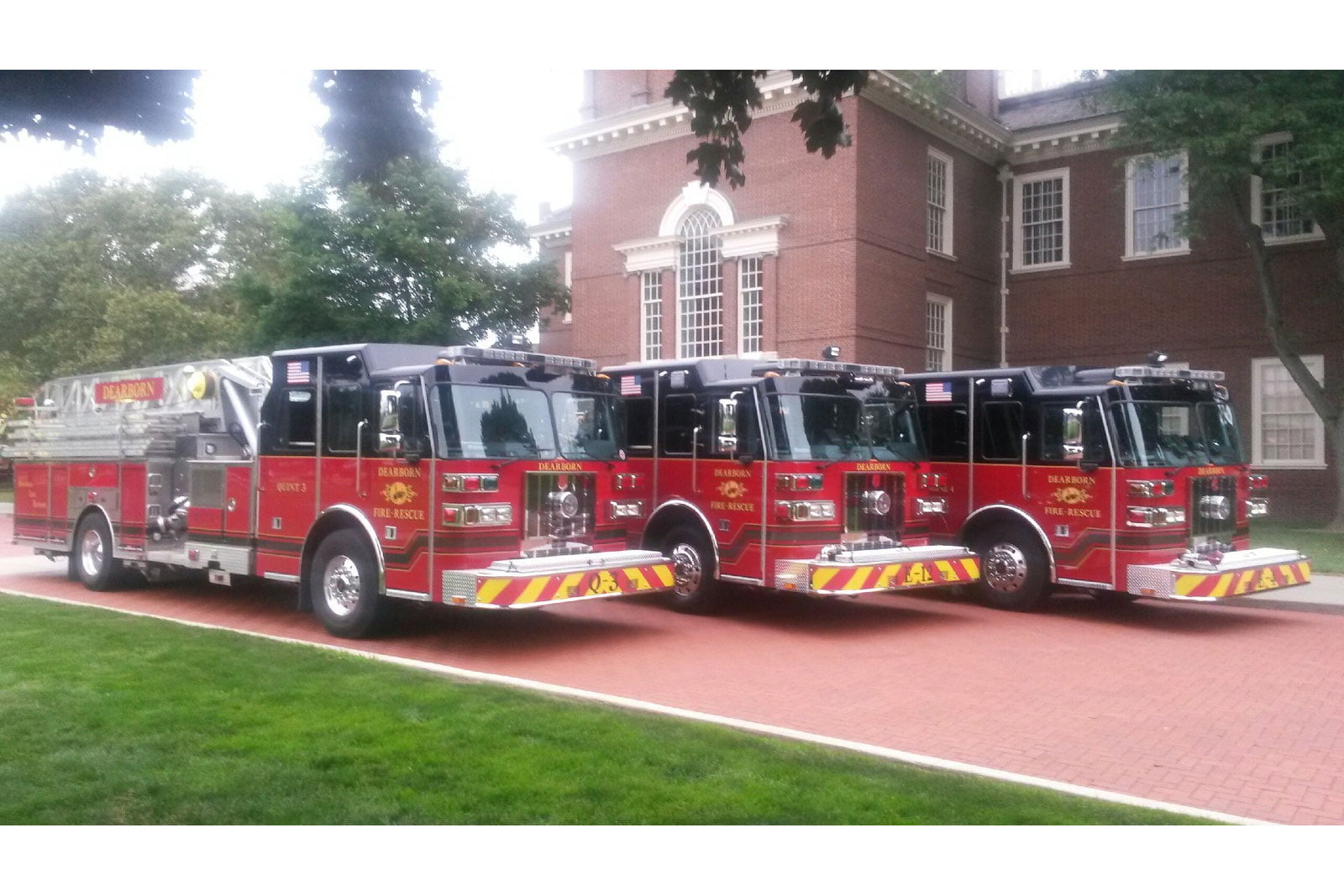
The Dearborn (MI) Fire Department runs six front-line Sutphen engines, including a quint, a 100-foot Sutphen aerial ladder, and a 95-foot Sutphen aerial platform. (Photos 1-3 courtesy of Dearborn Fire Department.)
Dearborn’s Sutphen apparatus include six front-line engines, one of which is a quint, two reserve engines, a 100-foot aerial ladder, and a 95-foot aerial platform, says Mike Weinburger, a Dearborn captain and apparatus supervisor. “When you go to the Sutphen plant, you get the sense of being taken into the family,” Weinburger says. “The workers are well taken care of, and we always look forward to going there and talking with them about the rigs. Also, there’s strong follow-up when the vehicle is completed, and if any service issues come up, the dealer, Apollo Fire and Equipment, takes care of them right away.”
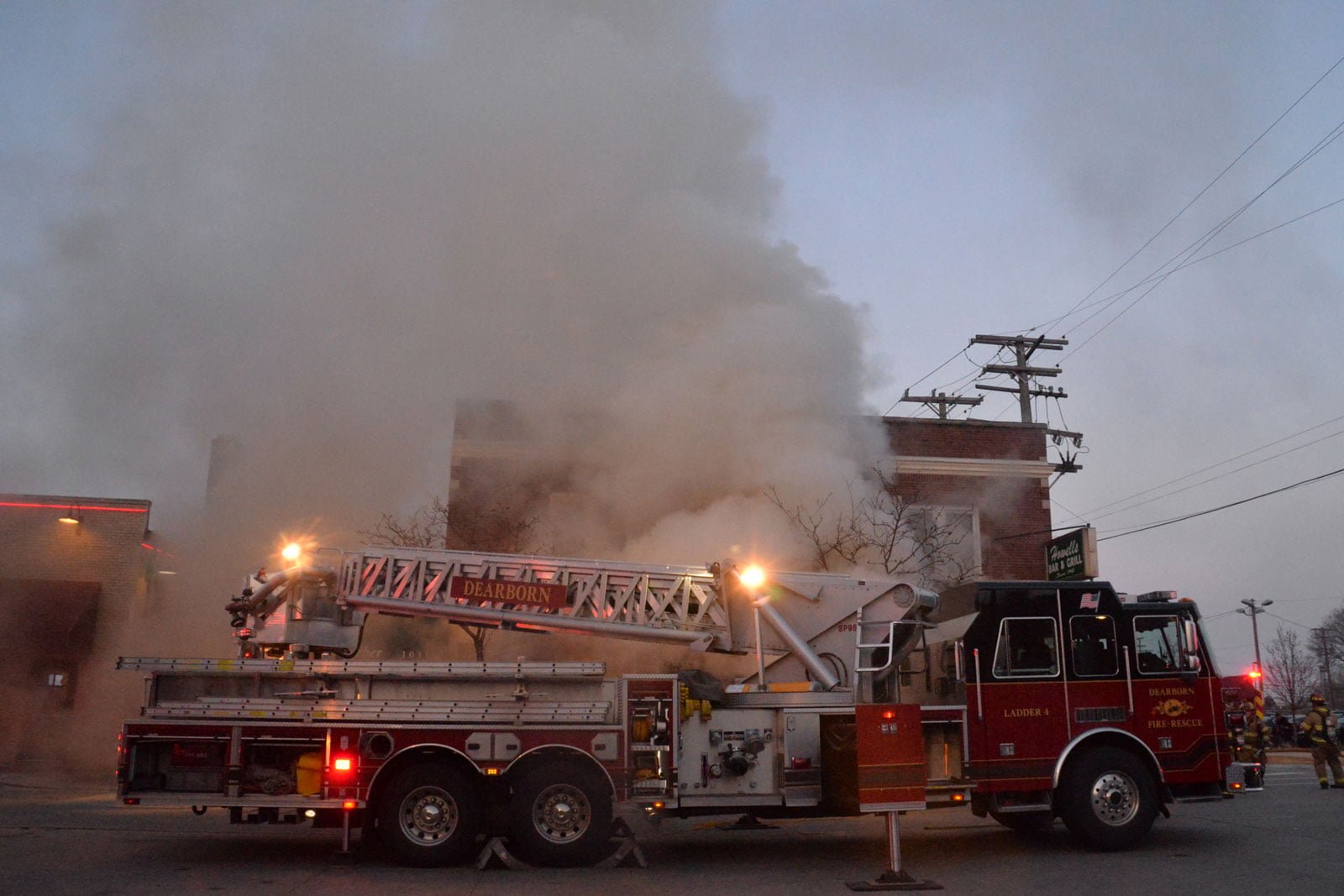
Dearborn’s 95-foot Sutphen platform working at a structure fire.
Murray continues, “It comes down to the fact that the quality of Sutphen’s products is outstanding, and we also like the fact that Sutphen is a family-owned company that bends over backwards to get our input on the apparatus we want and to listen to our thoughts about how we plan to use them. Also, Sutphen has great relationships with its vendors and service contractors who address any issues we have right away.”
Chad Teske, fleet manager for Clemson Fire and EMS, says his department runs three engines and a 100-foot aerial ladder platform built by Sutphen, plus a 70-foot Seagrave aerial, two brush trucks, seven utility pickup trucks, four ALS ambulances, and two RIBs to cover the eight-square mile city of Clemson with a population of 17,500, and the 1,400-acre Clemson University with a population of 26,000 students.
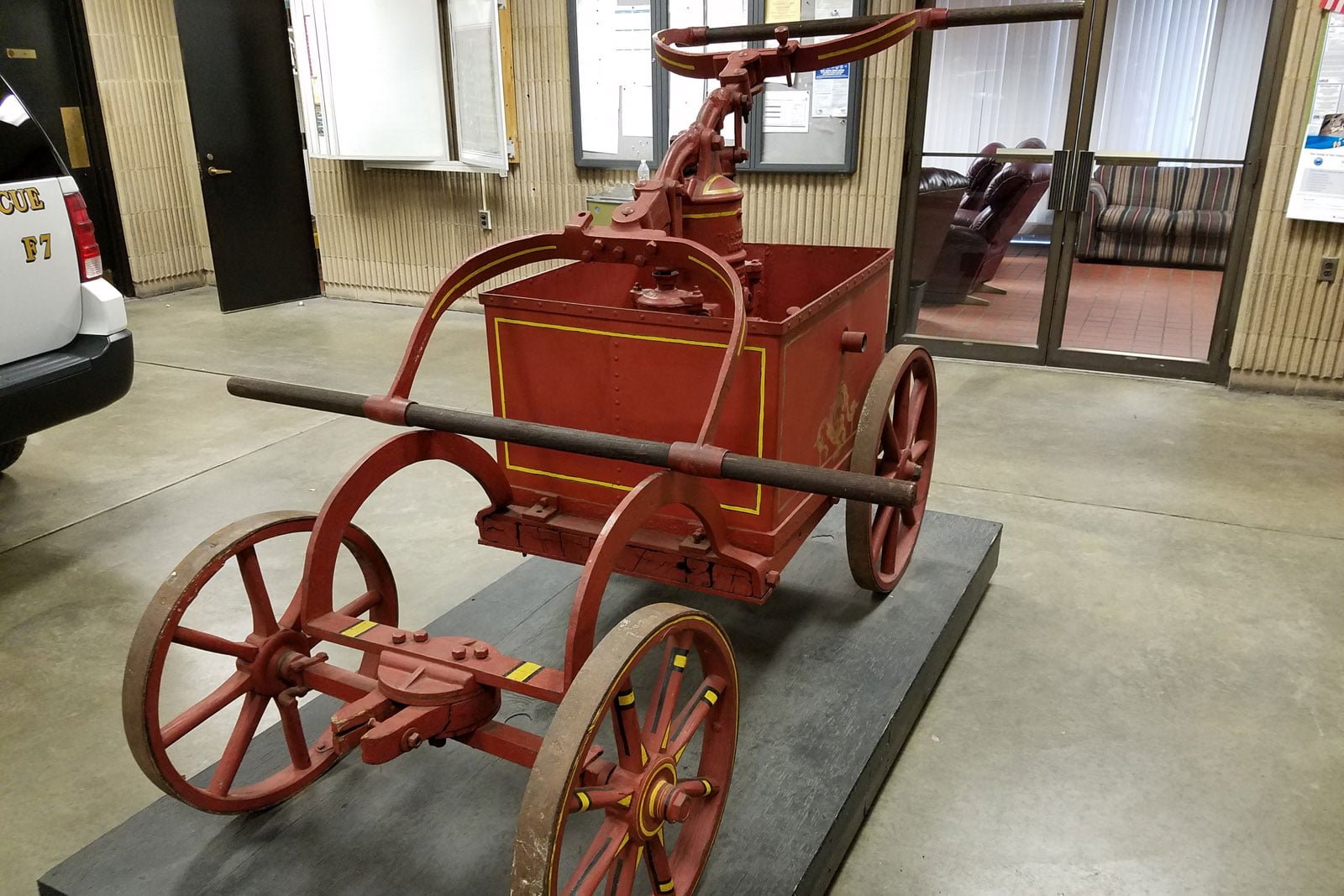
The Dearborn Fire Department has a 1908 hand pumper made by Sutphen.
“We’ve been doing business with Sutphen since 1990,” Teske says. “We have very detailed specs, and Sutphen is the only manufacturer to agree to all of the specs without exception. It was our best decision ever to go with Sutphen.”
Teske notes that on one visit to the Sutphen plant, his truck committee saw Sutphen president Drew Sutphen on the shop floor “wearing a suit, with his sleeves rolled up, and greasy hands and arms, trying to figure out a problem on a vehicle with a technician.” He adds that the Sutphen team delivered a pumper to Clemson “with Ohio State stickers all over the truck. “But, we got back at them because during our next visit to the plant, we put Clemson tiger paw stickers on their tool boxes and on Drew’s desk.”
Drew Sutphen notes that 2021 is the 131st year that Sutphen has been in business and says he’s been told by key customers about the good experiences they’ve had with his company, which he attributes to his employees taking nine steps to be successful. “Our first step is the initial sales contact where we work with our dealers to know what the Sutphen experience is and how to communicate it,” Sutphen says. “Second is to assist in writing the specs, followed by ballpark pricing and navigating the purchasing process. After getting the order, the fourth is assigning a sales territory manager and project coordinator, with the fifth step being continual communication with the customer.”
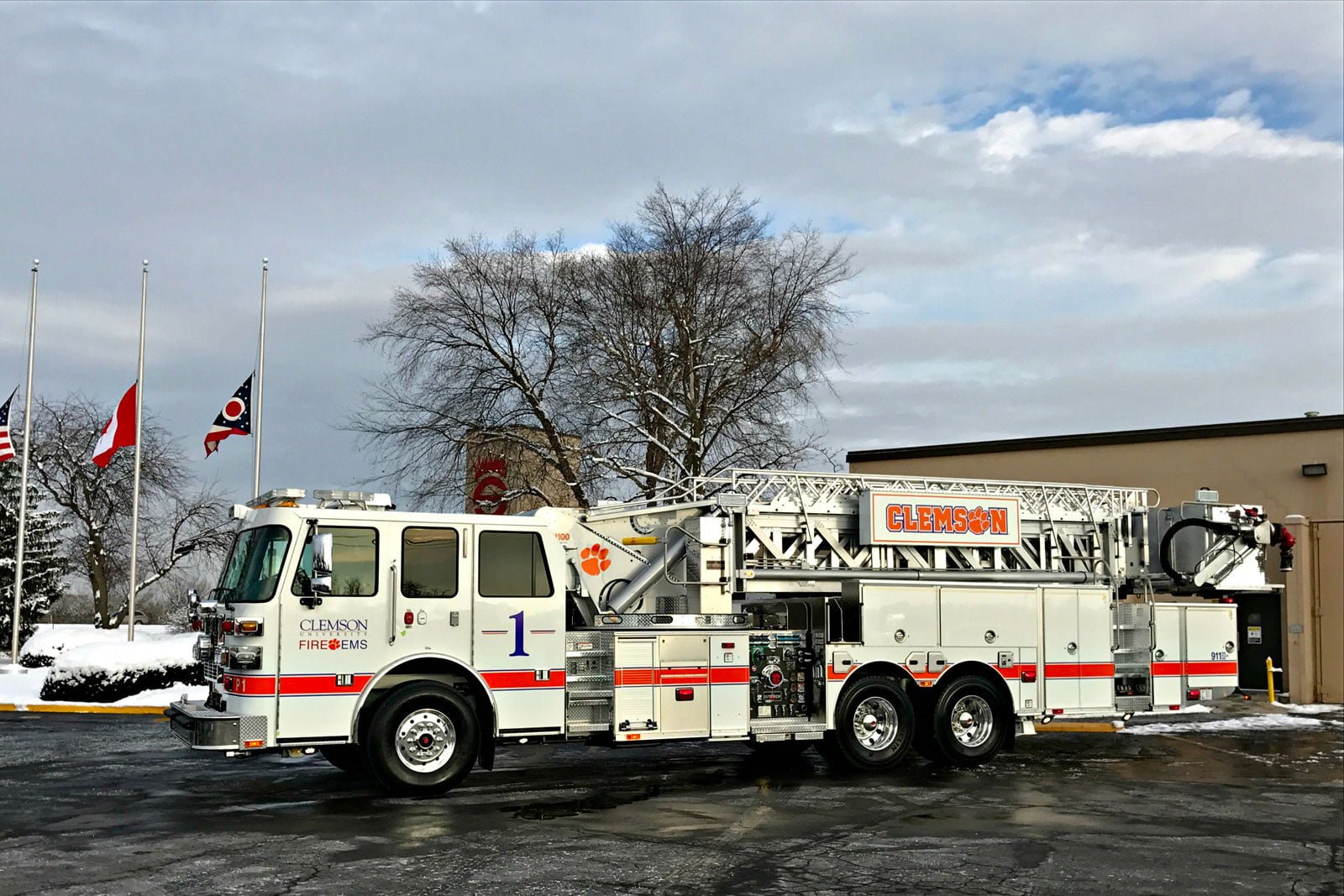
Clemson (SC) Fire and EMS run three Sutphen engines, and this 100-foot Sutphen aerial platform. (Photo 4 courtesy of Sutphen Corp.)
Sutphen notes the sixth step in his company’s process is optional, but half of his customers choose it: a midproduction inspection. “Seventh is the final inspection where we designate a Sutphen employee to be at their side through anything they want to do,” Sutphen says. “The eighth step is delivery of the vehicle and a demonstration of its operation and maintenance, while the ninth step is customer service and parts support for the life of the apparatus. By using these nine steps, we’ve been able to create intense loyalty between Sutphen and our customers.”
ALAN M. PETRILLO is a Tucson, Arizona-based journalist, the author of three novels and five nonfiction books, and a member of the Fire Apparatus & Emergency Equipment Editorial Advisory Board. He served 22 years with the Verdoy (NY) Fire Department, including in the position of chief.



